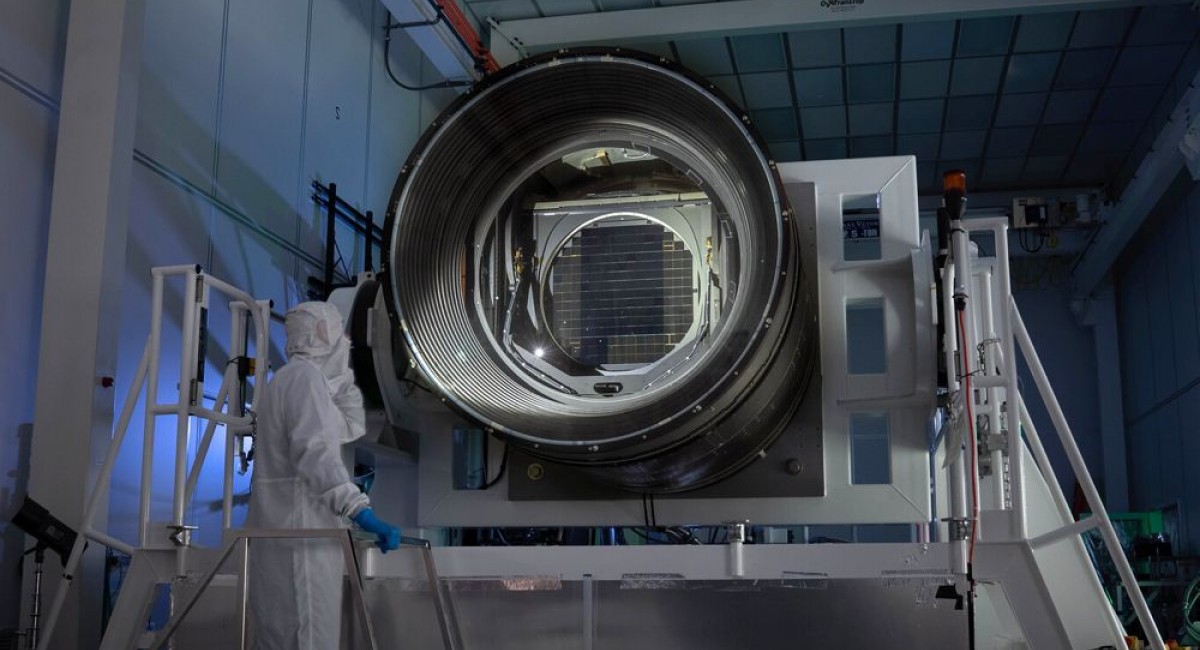SEARCH
World's largest astronomy camera is finally complete

SHARE IT
The SLAC (Stanford Linear Accelerator Center) National Accelerator Laboratory has announced the completion of the LSST Camera, which can capture 3,200-megapixel images and will now be put on a telescope in Chile to help solve some of the universe's greatest mysteries.
The U.S. Department of Energy (DoE) approved the building of the Legacy Survey of Space and Time (LSST) camera module in 2015, despite being in development for over two decades. By early 2020, technicians at the DoE's SLAC National Accelerator Laboratory assembled the module's huge sensor array, consisting of 189 16-megapixel sensors. The first composite test photographs were captured in September.
SLAC engineers and collaborators have finished the assembly of all components, including the frame, lens, and sensor. The 3.2-gigapixel array now contains 201 custom-designed CCD sensors, with each pixel measuring around 10 microns in width. A 3-foot-wide lens seals the focus plane in a vacuum chamber, while the front lens is said to be greater than 5 feet (1.5 meters) in diameter. The Lawrence Livermore National Laboratory manufactured all three lenses used in the camera arrangement.
The prime-focus imaging equipment is set to take a 15-second exposure every 20 seconds to observe the universe in "unprecedented detail." The optical system, with three aspheric mirrors and huge quick-change filters, will capture light at wavelengths ranging from ultraviolet to near-infrared (0.3-1 µm).
"Its images are so detailed that it could resolve a golf ball from around 15 miles away, while covering a swath of the sky seven times wider than the full Moon," says Aaron Roodman, Deputy Director and Camera Project Lead at the Vera C. Rubin Observatory.
The total thing is believed to be around the size of a small car and weighs 6,600 pounds (3,000 kilograms). It will now be packed and shipped to the Vera C. Rubin Observatory in Chile, where it will be installed on top of the Simonyi Survey Telescope later this year to assist scientists in unraveling cosmic mysteries.
One of its targets will be weak gravitational lensing, which occurs when "massive galaxies subtly bend the paths light from background galaxies take to reach us" and cause imaging distortions. Researchers hope to get a deeper understanding of the universe's expansion across time, the influence of the odd force thought to be driving it, and insights into current expansion rates.
In addition to providing avenues for better understanding the composition of the cosmos, the 10-year study is likely to uncover mysteries about our own galaxy. The LSST camera's sensitivity is predicted to result in a considerably more comprehensive map of the Milky Way, "yielding insights into its structure and evolution, as well as the nature of stars and other objects within it."
The scientists also want to focus in on smaller objects in our solar system to get a better picture of our closest neighbors, how our system developed, and perhaps identify oncoming asteroids.
"More than ever before, expanding our understanding of fundamental physics requires looking farther out into the universe," said Kathy Turner of the DoE's Cosmic Frontier Program. "With the LSST Camera at its core, Rubin Observatory will delve deeper than ever before into the cosmos and help answer some of the hardest, most important questions in physics today."
MORE NEWS FOR YOU

 Help & Support
Help & Support 

